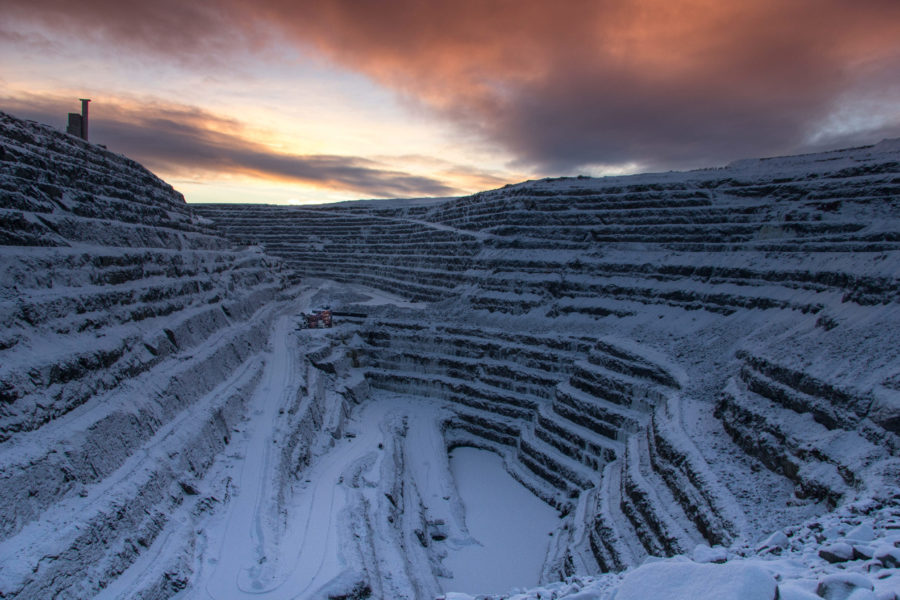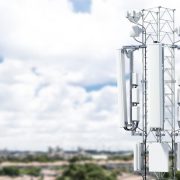5G vs 4G: what is the difference?

Ericsson suburban 5G mast
Fifth-generation networking is on its way. Promising superfast speeds and an end to congestion, the technology is expected to revolutionise mobile networking and create new economic opportunity: but how exactly will it do this and what makes it different to 4G?
Hotly anticipated fifth generation mobile telecoms technology, known as 5G, is expected to be a step-change in mobile networking – promising exponentially faster download speeds and data-sharing in real time.
Later this year, several mobile operators will roll out trials of the first iteration of 5G in different cities across the UK and globally a number of pilot zones have already been switched on. US-based Verizon has activated commercial 5G for the first time in the United States, as have Swisscom and Ericsson in Switzerland, with other 5G-enabled areas live in China, Japan, Australia and Norway.
Ericsson are predicting that 1.5 billion users – 40 per cent of the global population coverage – will have access to a 5G network by 2024; but how does the technology actually work and can the reality live up to the hype?
How does 5G work?
5G is a new digital system for transforming bytes – data units – over air. It uses a 5G New Radio interface, along with other new technologies, that utilises much higher radio frequencies (28 ghz compared to 700 mhz – 2500 mhz for 4G) to transfer exponentially more data over the air for faster speeds, reduced congestion and lower latency, which is the delay before a transfer of data begins following an instruction.
This new interface, which uses millimetre wave spectrum, enables more devices to be used within the same geographic area; 4G can support about 4,000 devices per square kilometre, whereas 5G will support around one million. This means more Netflix streaming, voice calls and You Tube carried, without interruption, over the limited air space.
5G also uses a new digital technology called Massive MIMO, which stands for multiple input multiple output, that uses multiple targeted beams to spotlight and follow users around a cell site, improving coverage, speed and capacity. Current network technologies operate like floodlights, illuminating an area but with lots of wastage of the light/signal. Part of the roll-out of 5G involves installing Massive MIMO and 5G New Radio to all mobile network base stations on top of the existing 4G infrastructure.

How is 5G different to 4G?
Compared to third generation mobile networking, 4G enabled previously impossible quality video streaming and calling on the go, meaning live TV is now routinely watched on the daily commute. More video streaming, however, has increased congestion in the network.
“4G is reaching the technical limits of how much data it can quickly transfer across blocks of spectrum,” explains Chris Mills head of industry analysis, at Tutela. “A major difference between 5G and 4G is this congestion will be eliminated.” This mean no more five bars of networking signal at rush hour but an inability to access a web browser.
But arguably, 5G’s biggest differentiator to 4G will be as a gateway for the Internet of Things-connected world at scale. Later iterations of 5G networking are expected to be revolutionary for data-driven industries, smart cities and infrastructure management because it will be possible to have many more devices working, reliably, securely and uninterrupted in the same area. Overall, due to the new technologies, spectrum and frequencies it uses, 5G has several benefits over 4G; higher speeds, less latency, capacity for a larger number of connected devices, less interference and better efficiency.
How does 5G work in terms of bandwidth, latency and spectrum?
Each operator owns blocks of spectrum which is a range of electromagnetic radio frequencies used to transmit sound, data, and video across a country. This spectrum is added together to create their total network capacity which determines how fast they can transfer data.
“Today an operator might have 100 mhz of entire spectrum to use for all of its UK customers, but eventually with 5G this will increase to around 1,000 mhz – that is the real change with 5G,” explains Mr Mills.
This will also create much less latency in the system meaning data will be transferred in real time.
Latency for 4G is around 20-30 milliseconds, but for 5G it will reach well below 10 milliseconds, and in best cases around 1 millisecond delays, according to Mats Norin, program manager at 5G For Industries, Ericsson Research.
“For consumers this is not as important but will make things seem faster, however, for industry – for long distance, remotely-controlled heavy machinery, for example – it will be critical,” he says.
3G vs 4G vs 5G
So how fast will 5G really be?
According to Vodafone, 5G promises device speeds around 10 times faster than 4G, meaning high-quality, ultra-high resolution 4K video calls – the standard used for commercial digital cinema – downloads will be delivered even quicker to smartphones and tablets. Data transfer of less than 20 milliseconds will be standard.
Mr Mills warns, however, that much of what is published about the speed of 5G is hype – especially for consumers.
“Gigabytes speeds are useful for a handful of applications, such as live streaming an 8k VR headset over a 5G network, however, for the average user, there is not much need for that kind of speed on a mobile device,” he says, “Live streaming or downloading HD video is very achievable using a 4G network.”
“People could use a 5G WIFI router instead of paying for in-home broadband – this will suit renters who don’t necessarily want contracts tied to a property,” he says. Verizon and AT&T are already investing in trials in the US.
What will 5G enable businesses and industry to do?
It’s anticipated that 5G will be the catalyst for connecting humans and machines together on an unprecedented scale for new business and economic opportunities. In fact, a report from industry analysts IHS Markit estimates that 5G will enable $12.3 trillion of global economic output in 2035. While an International Data Corporation (IDC) study estimates the amount of data created, captured, and replicated across the world could grow from 33 Zettabytes (ZB) in 2018 to 175 ZB by 2025.
Uses cases include the development of truly haptic applications – where tactile sensation or experience can be shared live – so remote operators of robotics can ‘feel’ and ‘touch’ through a machine despite being thousands of miles away. This could be used in factories, mines or even for remote surgery.
“For critical applications, cutting latency to one or two milliseconds will be game-changing for remote co-ordination,” says Mr Mills.
A real-time, fast and reliable network can enable industries to free machines from cabling for network connection to go wireless for more flexible and autonomous operations that can increase productivity and reduce costs. For example, at the Boliden Aitik mine in Sweden, 5G-enabled automation, used for drilling and blasting, has reduced costs by one per cent, saving €2.5 million annually.
While, manufacturers can achieve 1- 3 per cent productivity gains, resulting in millions of pounds in savings, from more flexible and better-managed production lines via 5G-powered wireless factories, according to research by the Worcestershire 5G Consortium.
5G is also expected to create truly connected and smart cities, as well as be the supporting network for autonomous vehicles.

How secure is 5G?
Many of these use cases could benefit from network slicing – splitting of the network to tailor speed, capacity, coverage, encryption and security – which can be achieved much more easily with 5G.
“Slicing offers manufacturers and others a dedicated network with which they can fully control and support their IoT solutions for reliable communications, with guaranteed quality of service and Cloud or Edge-based computation,” says Dritan Kaleshi, head of Technology, 5G at Digital Catapult.
This can provide an additional element of security not afforded by WIFI, which is shared with others on the spectrum and is therefore more easily interfered with, and less easily achieved with 4G.
“If a company has particularly sensitive data governed by regulation requirements it can be sent over fundamentally different chunks of network to safeguard privacy, slicing can enable that for 5G very seamlessly,” says Mr Mills.
When will 5G arrive?
Yesterday, is what most in the industry will say. Yet, while tests have been rolled out across the globe, for really broad 5G coverage across the UK, low-band spectrum (700-900 ghz range) is required, which will only become available in 2020, says Mr. Petty. Vodafone has announced it will launch 5G in 19 cities across the UK at some point this year.
“Early releases of 5G will be primarily focused on dense urban areas, or where people want to build and test new 5G applications for industry 4.0 or automotive applications,” he explains.
According to the UK government, there is unlikely to be a ‘big bang’ moment when 5G networks are ‘switched on’, so to speak. Instead it will be an ‘evolutionary process’.
But it’s likely consumers could readily procure handsets and find areas of 5G coverage in cities from 2020 onwards, says Professor William Webb, CEO of Weightless SIG and president of the Institution of Engineering and Technology.
“Mass market adoption is generally expected around 2022 – with those pushing hardest being South Korea, China, Japan, and the US, but most developed countries will be close behind.”
Source:https://www.raconteur.net/technology/4g-vs-5g-mobile-technology




